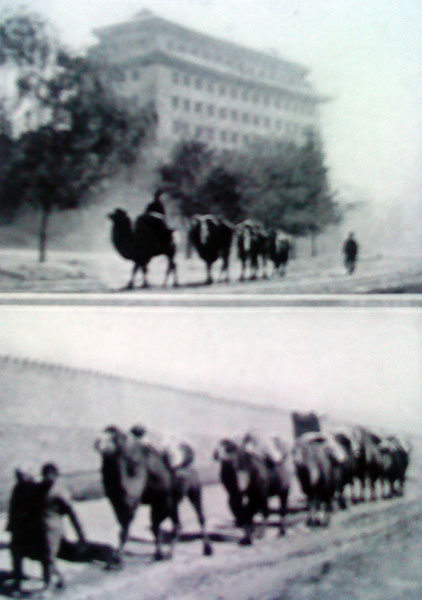Targett

Targett
+91 33 22307241 / 42
Courtsey: ALL ABOUT TEA by William H. Ukers

Russian Camel, Train at Peiping
Upper - Inside the gates
Lower - Outside the walls.
Although the first news of the tea drink of China was brought to Russia as early as 1567 by two Cossacks, Ivan Petroff and Boornash Yalysheff, and a small gift of tea was brought by a Chinese embassy to the Czar Alexis at Moscow in 1618, it was not until the signing of the Nerchinsk Treaty between China and Russia in 1689 that small quantities began to reach Russia by the overland route via Mongolia and Siberia.
All of the first teas received in Russia were brought by government caravans, but in 1735 the Empress Elizabeth established a regular private caravan trade between Russia and China. The quantities of tea imported in this way were not great at first, because tea was so costly – fifteen rubles a pound in 1735 – that only court nobles and officials could afford to buy it. Also, the caravans, although sent regularly, were unable to carry large amounts of tea. It has been estimated that during the first part of the eighteenth century not exceeding 10,000 poods (about 361,130 lbs) a year entered Russia; but a century later the annual imports had climbed to 100,000 poods (3,611,300 lbs), almost entirely chest teas.
The caravan trade, which has passed into history, presents one of the most vividly picturesque chapters in the annals of the tea trade, but few of us today appreciate its difficulties, or the length of time it took to get a shipment of tea from China to Russia in this way. Ordinary caravans numbered some 200 to 300 camels, each loaded with four chests of about 16 poods each, or about 600 pounds. The pace averaged approximately two and a half miles an hour, and the average day’s journey about twenty-five miles. The entire 11,000-mile trip took sixteen months. After the tea had been brought by water to say Tientsin, horses and mules were used for the first leg of the journey over the mountains to Kalgan, 200 miles northeast of Peiping.
At Kalgan the tea was loaded on camels for the 800 gruelling miles across the Gobi Desert. This was the most adventurous part of the journey, but it formed a short cut to Kiakhta and the balance of the route to Russia via Irkutsk, Nij-Udinsk, Tomsk, and Oomsk to Cheliabinsk.
The caravan trade from China to Russia via Mongolia reached its maximum during the years 1800 – 1880. In the latter year, a portion of the Siberian Railway was opened to traffic and the caravan trade began to decline. It disappeared entirely after the completion of the last link in the route from Vladivostock to Russia in 1900, when teas that formerly required sixteen months for the caravan journey made the trip by rail in seven weeks.